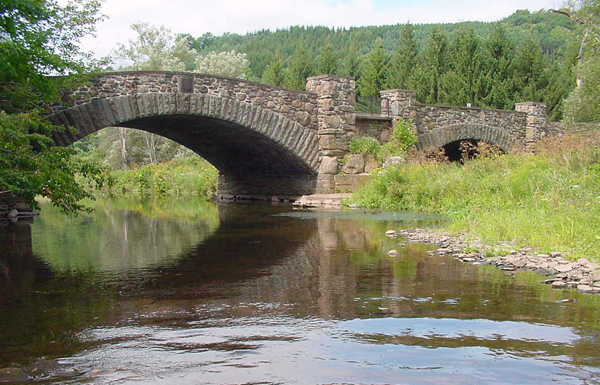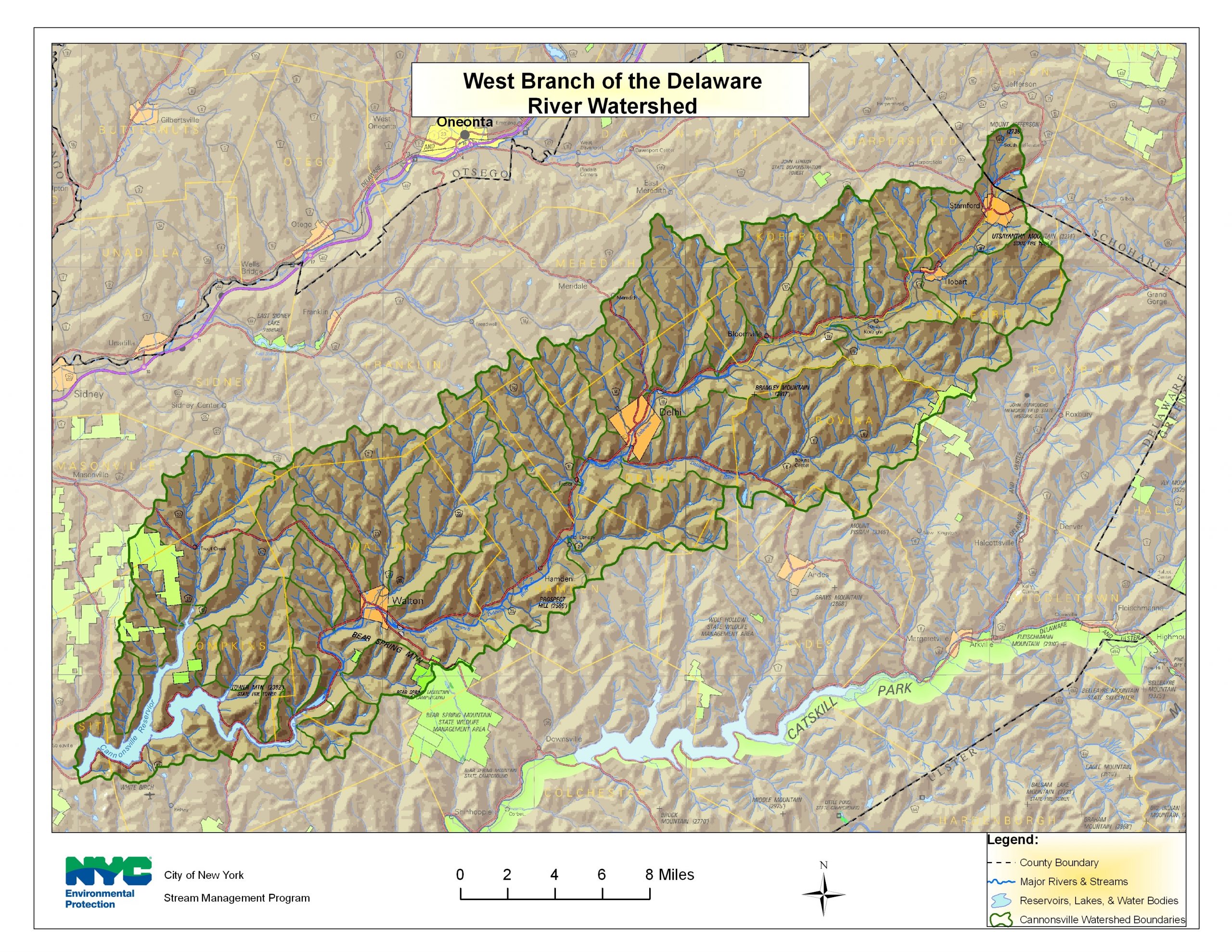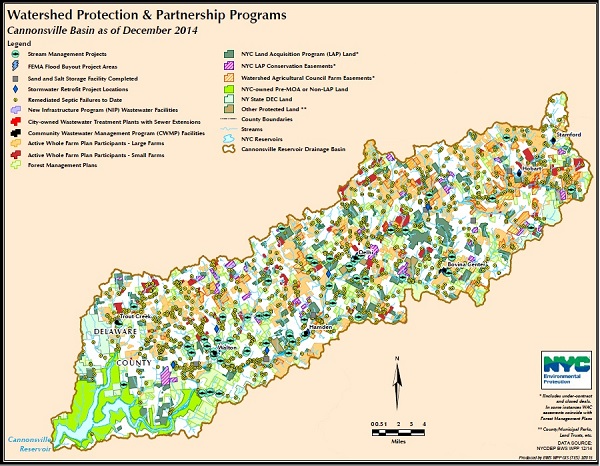Introduction
The West Branch Delaware River and its tributaries are the source waters for the Cannonsville Reservoir, part of the Catskill/Delaware drinking water supply system for New York City. The watershed above the Cannonsville Reservoir encompasses an area of 353 square miles with approximately 662 linear miles of rivers and streams. This predominantly forested and agricultural watershed represents a sizeable and challenging resource to comprehensively manage. Stream walkover observations and assessments suggest that the West Branch Delaware River has a tendency to become shallower and wider that is desirable due to increased sediment supply from excessive bank and bed erosion in the main river and its tributaries. While erosion and deposition are natural processes, many management activities can significantly increase erosion rates that in turn contribute to increases in sediment supply. These conditions demonstrate the need for comprehensive management and stewardship by all stakeholders.



